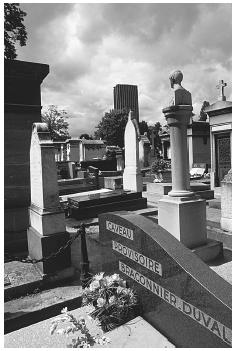Sartre, Jean-Paul
Traditional European Christian philosophy, particularly in the eighteenth century, was filled with images of and sermons on the fear of the judgment that would come upon the time of death. Characterized by Plato as the need to free the soul from the "hateful" company of the body, death was seen as the entrance into another world. By contrast, the efforts of nineteenth- and twentieth-century existentialists were to humanize and individualize death as the last stage of life rather than the entrance into that which is beyond life. This shift historically helped to make death conceptually a part of life, and therefore could be understood as a human phenomenon rather than speculation as to the nature of a spiritual life.
If death is the last stage of life, then one philosophical question is, What is the nature of the experience? It is to this question that the phenomenological analysis of Jean-Paul Sartre contributed significant insight. It can be said that when a child dies, the child becomes frozen in time. Always a child, the potential of that child is never realized and the experience of the life of that child ends. Sartre explains in his analysis of time that the past is fixed in the experiential history of the person. Whatever the person did, or even did not do, is simply the way it is. If a person was a coward when he or she died, then the image of that person as a coward is how the individual is remembered.
In his book Being and Nothingness (1956) Sartre established his early phenomenological method, exploring the nature of the human experience. Since Socrates, Western philosophers have suggested that essence or those basic aspects that make up the person are divinely preordained or predesigned prior to birth. Sartre, on the other hand, understood that the person must first exist before that which makes up the person can be identified, as human beings are not objective objects but rather subjective in their dynamic ability to change. Thus for Sartre, existence precedes essence. If analysis starts with the first human experience and ends with the last, then one's past is the past that was experienced by the individual, the present is the current reality, and the future reflects his or her potential. For Sartre, at the point of death the person does not have a past, as he or she is now dead and cannot continue to write in the log of the present. Rather, a person then becomes his or her past. Like the child who has died, in death the person is frozen in the minds of those persons who remember him or her.
Sartre used the concept of a wall to explain the transition from life to death. This concept is best understood by persons in a hospice who find that their comrades in death often understand them better than their families or those who do not understand their own finite nature. As he often did, Sartre offered his existentialist philosophy in a more academic volume and then explained it in his plays and novels. In his story The Wall (1964) Sartre writes about Pablo, a Spanish loyalist in his cell with two other republicans waiting execution by Generalissimo Franco's soldiers. He reflects as follows: "For twenty-four hours I have lived at Tom's side, I had heard him, I had talked to him, and I knew that we had nothing in common. And now we resemble each other like twins, only because we shall die together" (Stern 1967, p. 174). Persons faced with their own finitude often see the meaning of both their experiences and their lives from a larger perspective.

Sartre would say that as he has not experienced death, he does not know what it is, but he can see that it must have some reality as others seem to experience its presence. An atheist, he believed that there is no divine being and therefore no heaven or an afterlife. Rather, there are only those aspects of the conscious choices made by the individual that live on in the lives of those the person has touched. Sartre's understanding of life is that it reflects the experience of one's existence. When the person is dead, he or she is only memories held by those who are in some way a part of the life of the individual. These contributions to the humanizing of the dying experience and the philosophical understanding of the role of death offer benchmarks in the history of the philosophy of death.
See also: Frankl, Viktor ; Freud, Sigmund ; Immortality ; Philosophy, Western ; Plato
Bibliography
Sartre, Jean-Paul. Truth and Existence. Chicago: University of Chicago Press, 1992.
Sartre, Jean-Paul. Nausea/The Wall and Other Stories: Two Volumes in One. New York: Fine Communications Books, 1964.
Sartre, Jean-Paul. Being and Nothingness: A Phenomenological Essay on Ontology. New York: Philosophical Library, 1956.
Stern, Alfred. Sartre: His Philosophy and Existential Psychoanalysis. New York: Delta, 1967.
JAMES W. ELLOR
Comment about this article, ask questions, or add new information about this topic: